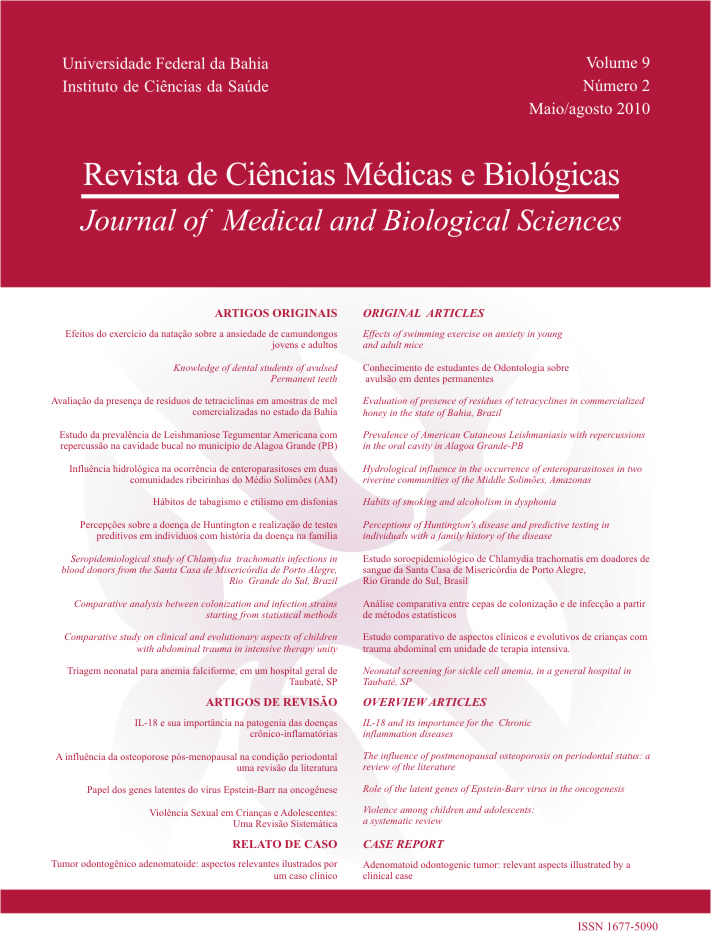Neonatal screening for sickle cell anemia, in a general hospital in Taubaté, SP
DOI:
https://doi.org/10.9771/cmbio.v9i2.4949Keywords:
sickle anemia – sickle cell trait – neonatal screening.Abstract
Sickle cell disease occurs due to genetic alterations resulting in the production of hemoglobin S. Neonatal screening is essential for the diagnosis of this disease. An observational study in 8911 newborns in a general hospital of Taubaté who did the newborn screening test between 2005 and 2008. We analyzed test results from the database of the Pediatric Clinic and the medical records of newborns and their mothers, which are arranged by year, sex and ethnicity of those involved and the diagnostic test considered: normal hemoglobin profile (HbFA), anemia cell (HBFS), sickle cell trait (HbFAS), hemoglobin C trait (HbFAC) and hemoglobin D (HbFAD). The assessed 51.34% were male, 48.27% female and 0.39% were of indeterminate sex. Only one boy had sickle cell anemia (0.01%), 168 newborns (1.88%) were diagnosed with sickle cell trait. For the other variant hemoglobin, the representation was little significant. Correlating the ethnic group and the hemoglobin profiles showed that the majority of children with sickle cell trait is present and white mothers with the same skin color. Probably the majority of black and mulatto mothers were related to white men, contributing to the low frequency of children with sickle cell anemia.
Downloads
Downloads
Published
How to Cite
Issue
Section
License
The Journal of Medical and Biological Sciences reserves all copyrights of published works, including translations, allowing, however, their subsequent reproduction as transcription, with proper citation of source, through the Creative Commons license. The periodical has free and free access.


